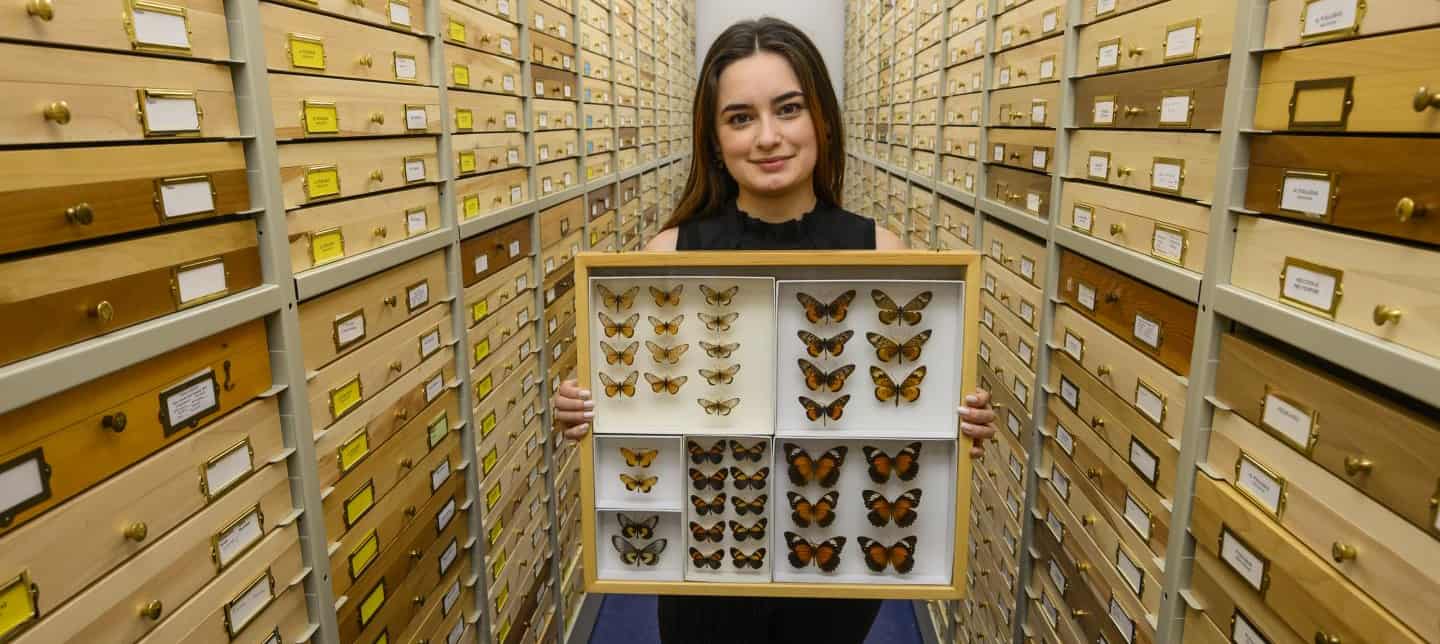Share this article
A butterfly battle of the sexes, but no new species
Some male butterflies seal their mate’s genitalia with a waxy substance to prevent future mating. But females can fight back, researchers say, evolving larger, more complex organs that are harder to plug.
“Males, in turn, counterattack by fastening on even more fantastic structures with winglike projections, slippery scales or pointy hooks,” the Florida Museum of Natural History writes. “It’s a battle that pits male and female reproductive interests against one another, with the losing sex evolving adaptations to thwart the winner’s strategies.”
Ana Paula dos Santos de Carvalho, a doctoral student in the Kawahara Lab at the museum, studied brush-footed butterflies to see if all this evolution could lead to a new species.
“I was expecting to see an association between plugs and new species appearing faster, but my work suggested there was no link at all,” Carvalho said. “Other studies had proposed a connection between sexual conflict and diversity, so these results came as a surprise.”
Read more here, and read the study in Systematic Biology here.
Header Image: Ana Paula dos Santos de Carvalho studies butterfly mating behavior. In her most recent project, she used museum collections to investigate the sexual dynamics of brush-footed butterflies, named for the sensory fibers lining their legs. Credit: Jeff Gage/Florida Museum








